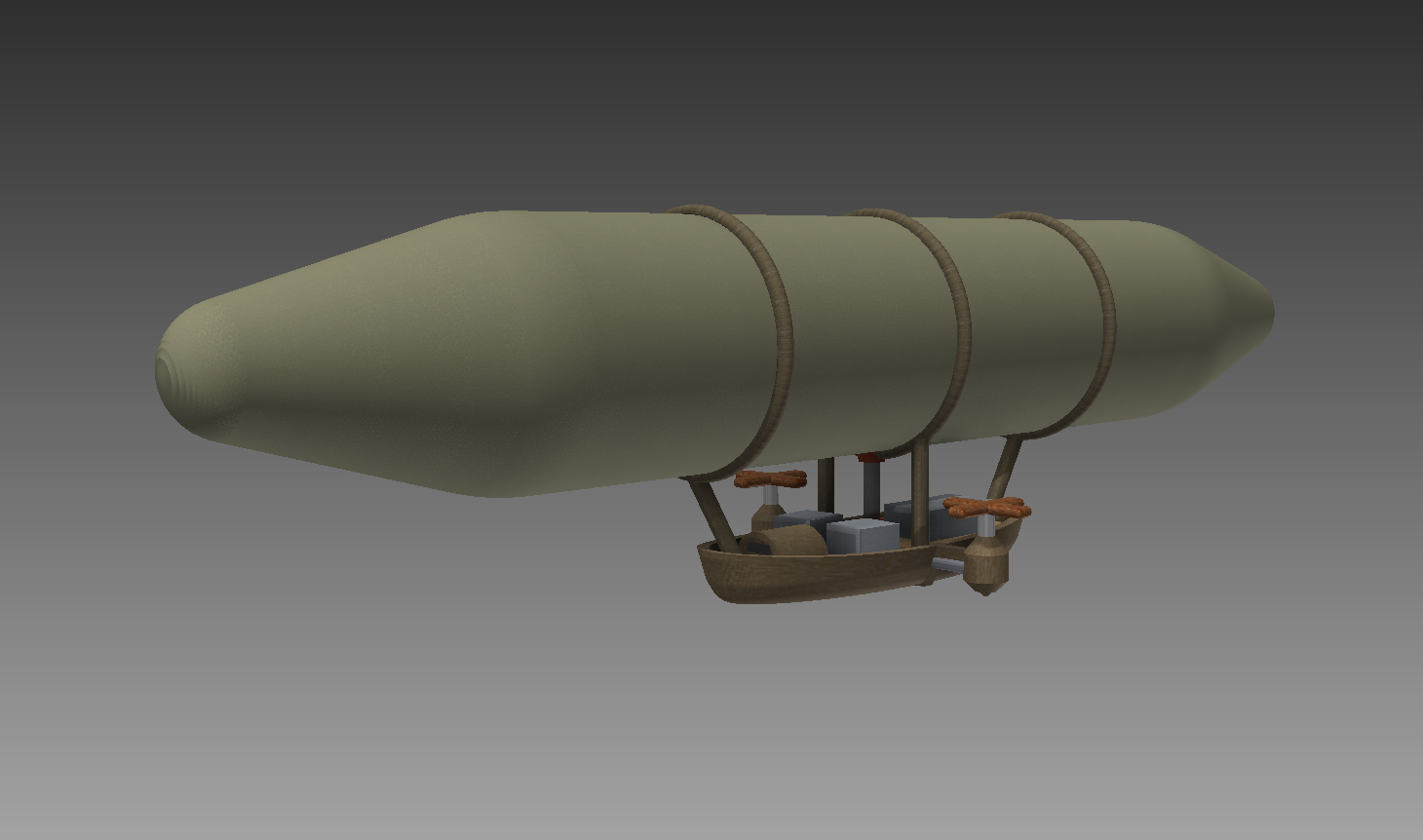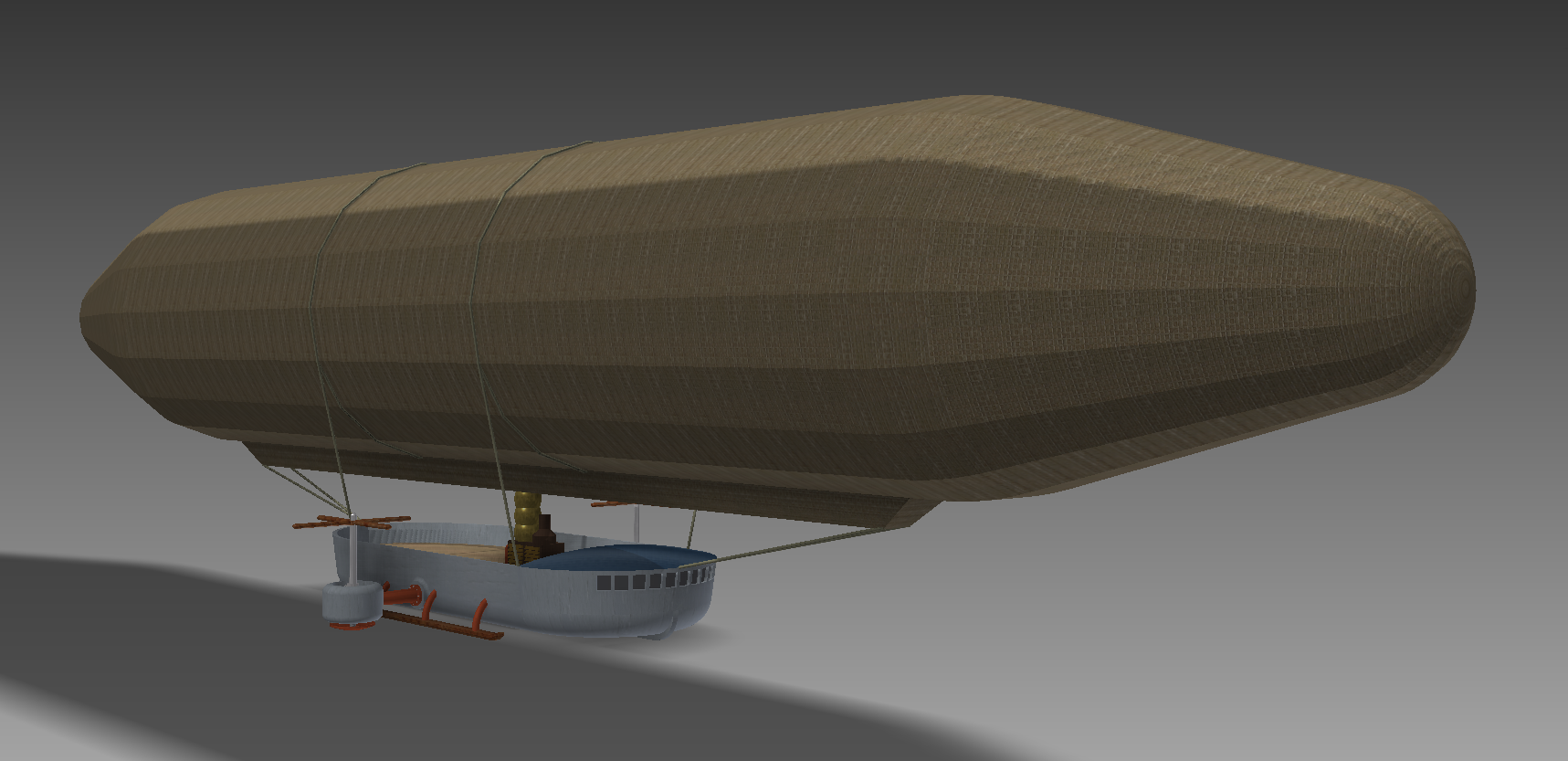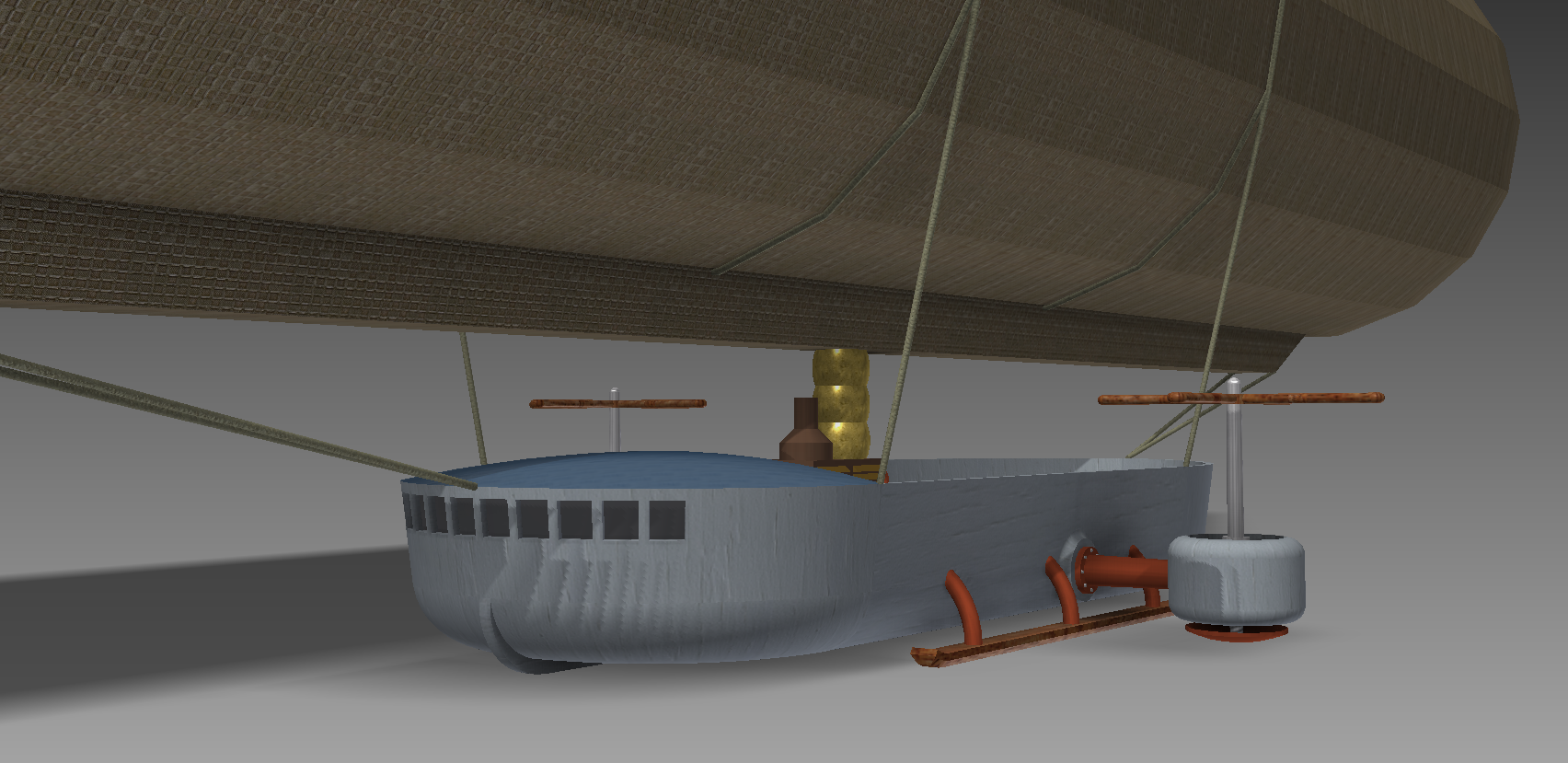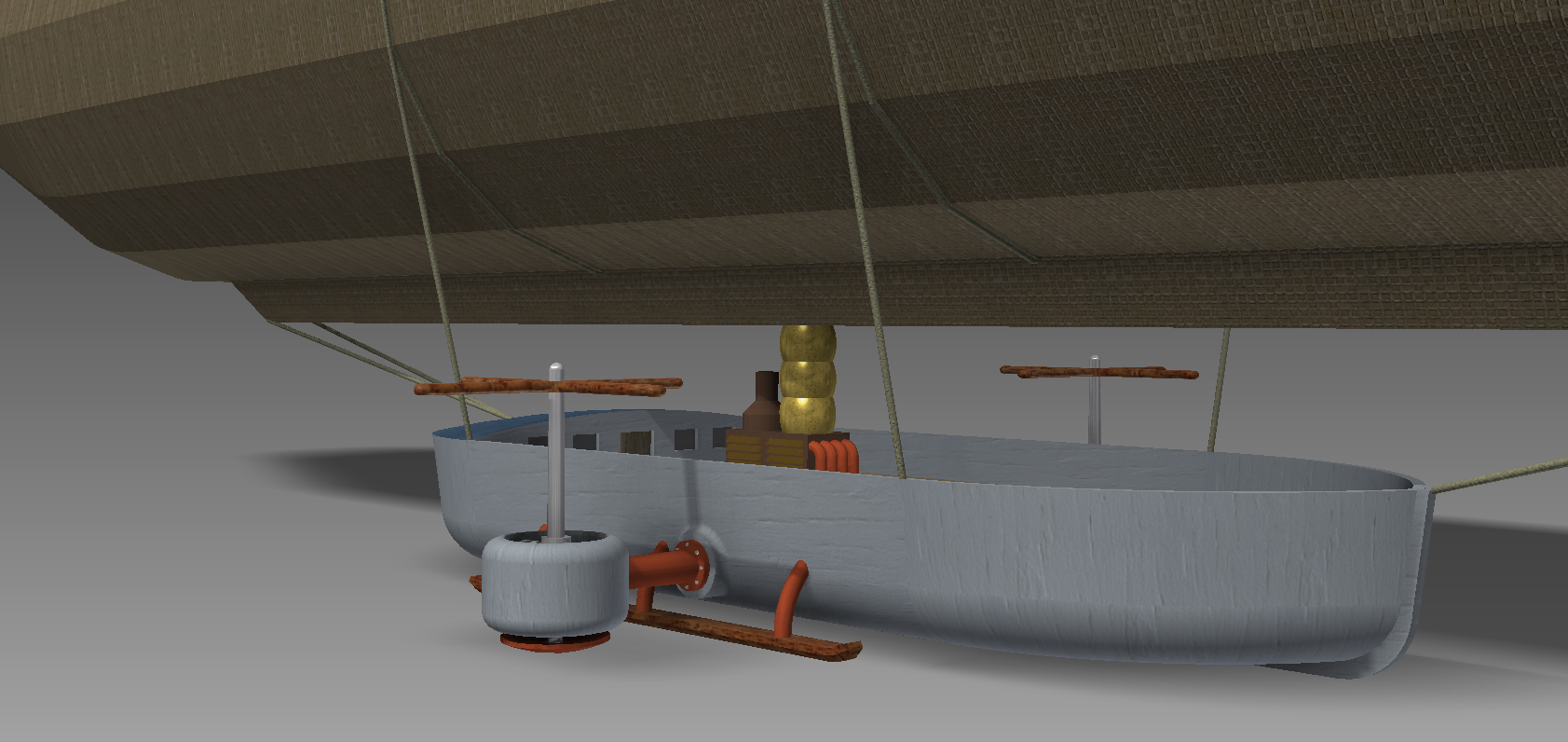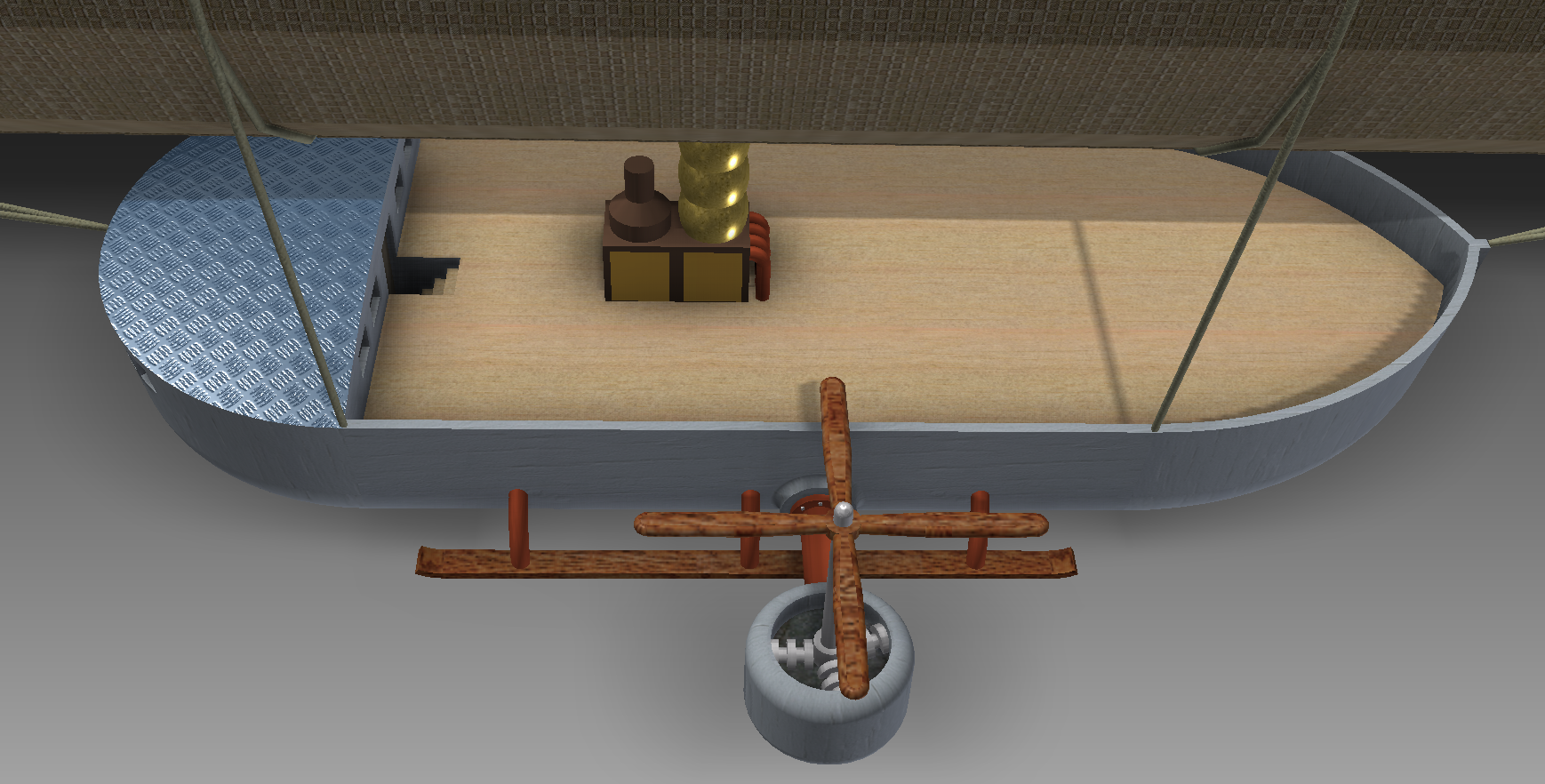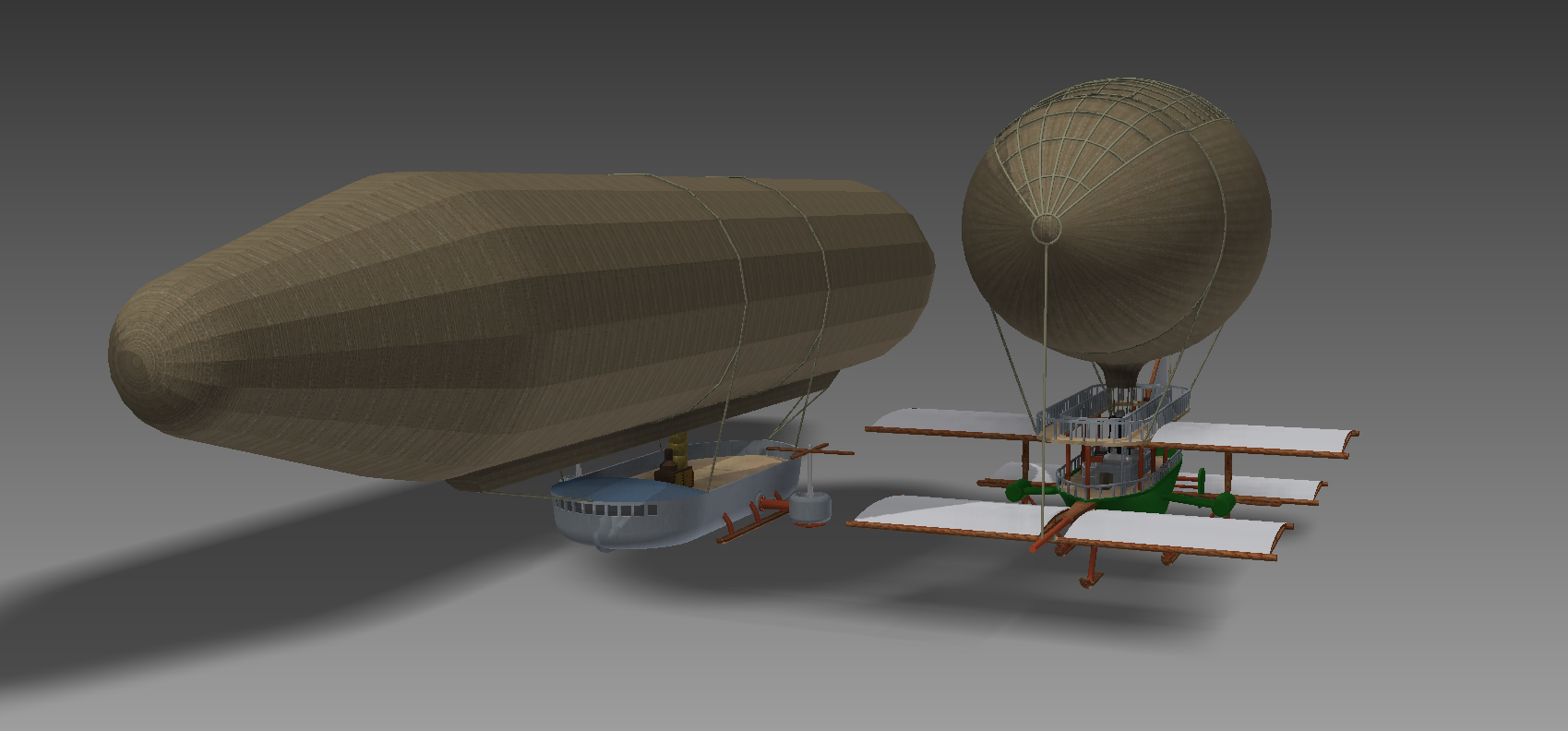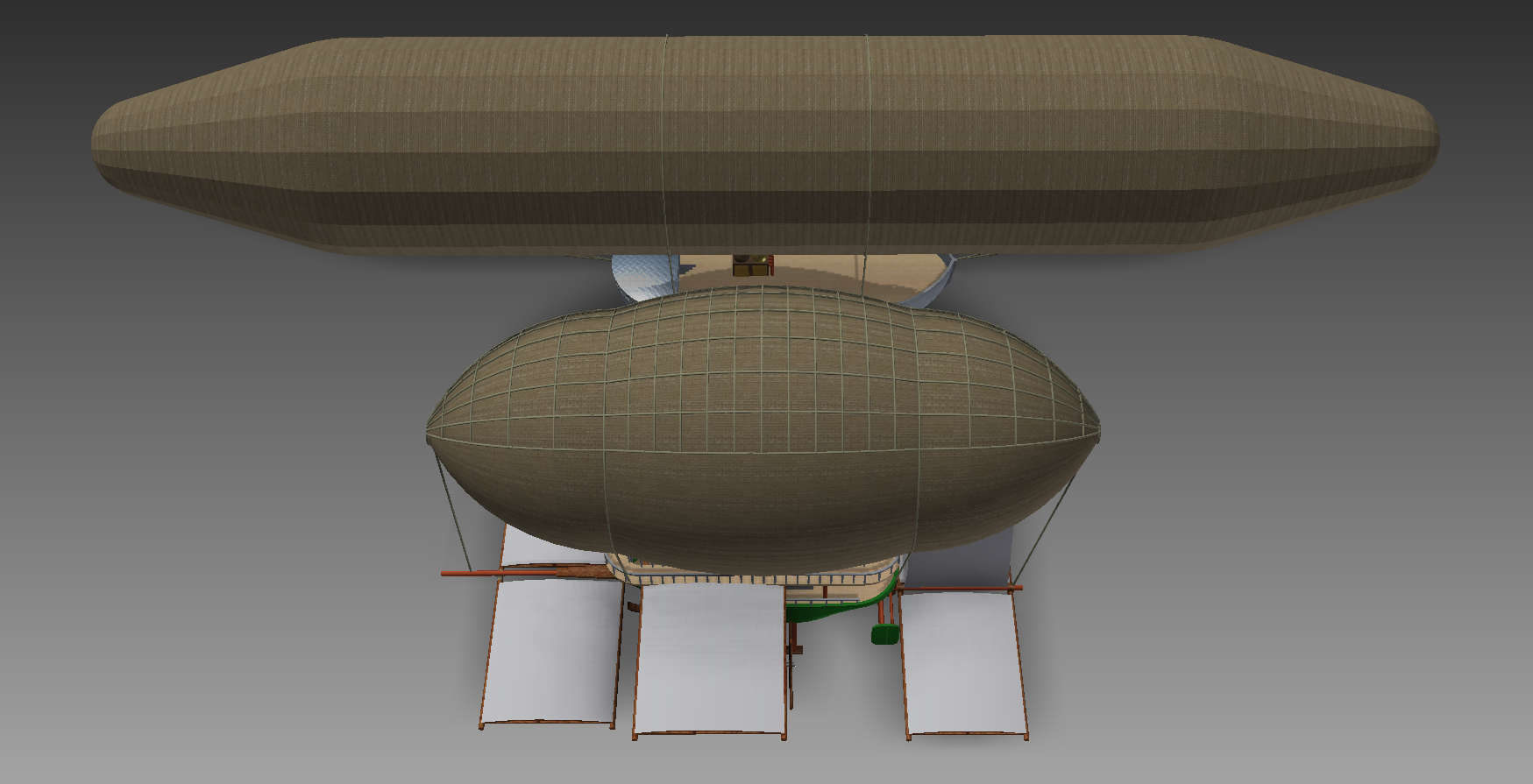Not to be confused with the sailing ship of the same name, a caravel is a hybrid of a dirigible and a helicopter. I explain how it is supposed to work in one of my old WordPress posts: https://kjworldsong.wordpress.com/2017/06/02/airships-of-the-nine-empires-part-1/
Much like the last airship, this is one I had made a 1:700 scale miniature of, but which I have since decided to re-design for 1:220 scale. This is a much simpler design, and didn't take nearly as long to render (once I figured out what I wanted it to look like - I made some notable changes).
The old one has a quonset hut for a pilothouse, which was a really dumb thing for me to do, since it has terrible visibility. A lot of my airships have that problem, actually, which is the other main reason that I'm re-designing most of them. If you would be so kind, rake me over the coals in the comments, because I've been a pilot since long before I started designing airships, so I ought to have known better! Likewise, there aren't enough details for anyone to know what they're looking at on this model. Here's the new one:
The features are much more identifiable on this one, I hope.
This pilothouse has much greater forward visibility, as well as side and downward visibility, something that the window on the quonset hut doesn't have.
This view shows the details of the furnace and the trunnions for the engines. It's a furnace, not a boiler - furnaces heat air, boilers heat water. This ship is powered by hot-air engines (a.k.a. Stirling engines), not steam engines, because such a system is much lighter.
This one shows the actual engines. Three hot-air engines are arrayed radially, each 100 degrees apart. The gondola deck is completely bare at the moment, but I could easily fill it with cargo boxes or passenger benches. The gold bits coming off the furnace, are meant to represent insulated ductwork. Most of the heat from the furnace powers the rotors, but some goes to heating the air surrounding the hydrogen cells. In the interest of safety, the exhaust IS NOT vented into the balloon, but instead used to heat clean air, which is then blown into the balloon, much like how a forced hot-air home heating system works. The exhaust, meanwhile, ends up getting blown onto the outside of the balloon, though I may add another pipe to that exhaust stack and reroute the exhaust at some point.
I'll leave you with a comparsion between the flying caravel and a plane-balloon, the latter being a much more primitive design. As you can see, I have added a rope net to the latter ship since last sharing it:
